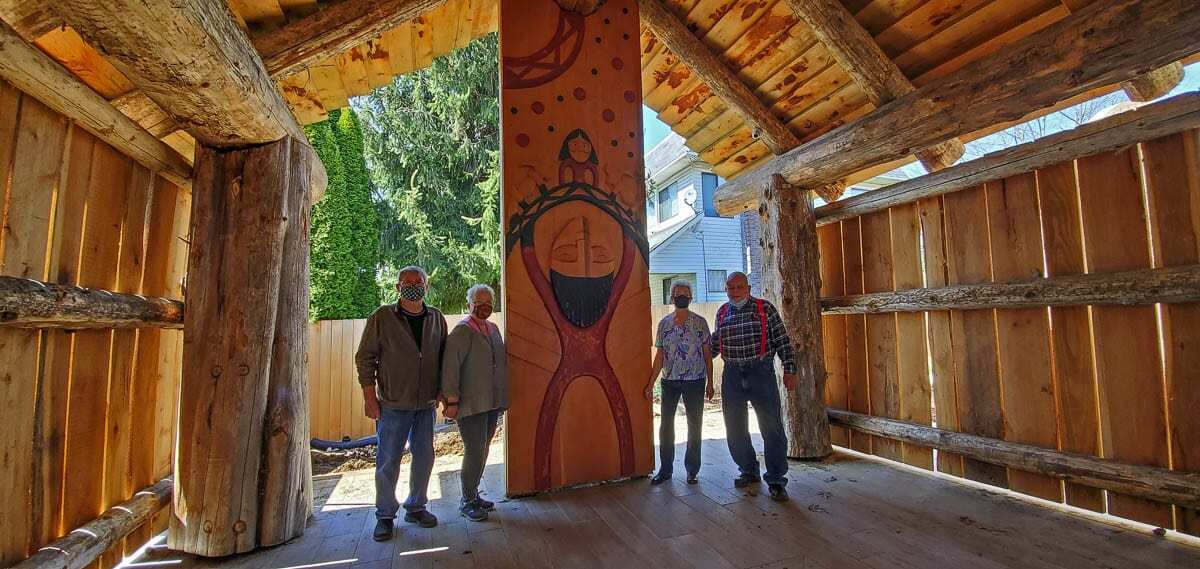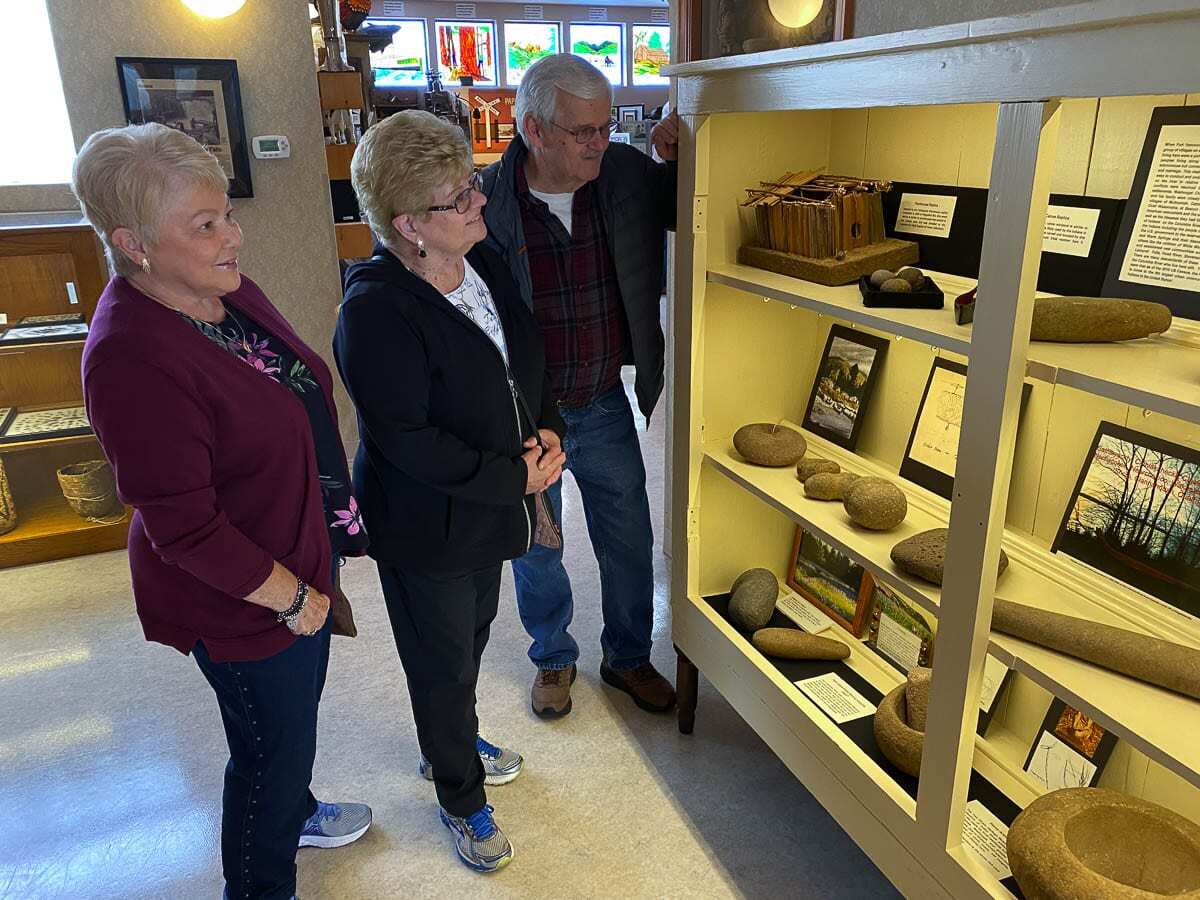Tour features new interior layout and Native American-themed outdoor gathering pavilion
The wait is over Clark County historians.
For the first time since the pandemic shut down tours in 2020, guests can visit the Two Rivers Heritage Museum, 1 Durgan Street in Washougal. Doors are open Saturdays only, from 11 a.m. to 3 p.m. Admission is $5 for adults, $4 for senior citizens and $2 for students. Camas-Washougal Historical Society (CWHS) members and children 5 and younger can enter free.

“We can’t wait to welcome guests and our members back to the museum,” said CWHS President Jim Cobb. “We hope local folks who have not had a chance to see the museum will stop in and look around at all we have to offer. Our community has so much to be proud of.”
The Gathering Place at Washuxwal outdoor pavilion is near completion. This four-year project has been a labor of love for local carpenter Jason Ferrier and artist Adam McIsaac. It stands as a monument to the native people who lived in similar cedar plank houses that once stood along the Columbia River.
“Building something of this scale and magnitude and significance has been really fun,” Ferrier said. “We tried to hide all the modern connections and give visitors that experience of what it would have been like to live in a home here at that time.”
Ferrier and his crew of volunteers are still working on the landscaping and drainage around the gathering place. There will also be an interpretive panel for the display that showcases how the components of the structure relate to what the natives used, as well as general information about tribes, and the interactions between the explorers and the people who lived here.

McIsaac carved the Chinook’s Creation of the Big Dipper story on one of the massive cedar support beams within the structure. According to the legend, it was so dark and the tribe couldn’t see so one of its members shot arrows into the sky and they lit up to form stars.
“The Big Dipper is in there and several other star constellations,” Cobb described. “That’s the story about how the stars got in the sky.”
Cobb thanked community members and local businesses for donating to the project. Ferrier said all the wood and the labor came to approximately $125,000.
“It was an amazing project to raise that kind of money,” Cobb said. “We didn’t think it was possible but the community came through.”
Jim Cobb and his wife, Lois, have been involved with the museum for decades, along with fellow board members Richard and Karen Johnson.
“Everything we have, people donate. That’s the heritage of the community,” Richard said. “We work really hard to put things together. The best thing is, we have lots of good stories about the items that we display.”
The museum features more than 6,000 pictures of local businesses, buildings and people. There are also dairy, farming, logging and musical instruments, old kitchen displays, books, land records, cemetery records, family history records, antique furniture, toys, tools, a replica of a blacksmith workshop and an old Washougal town pump.
“You get a sense of the history of this area,” Lois Cobb said. “A lot of the younger people haven’t seen these relics and old things.”
Students from Discovery High School, in Camas, created an interactive model of the Columbia River Gorge where the landmarks light up. There is also a Native American exhibit inside with woven baskets, stone bowls and tools.
The Carriage House, built in 2009, was transformed with new displays to make the area more interesting for visitors. A vintage buggy was moved from the floor to a high ledge which provides much better viewing. Other displays include tools, machinery and old signs.
“It’s wonderful that we’ve added new things,” Karen Johnson said. “We’ve got quite the package of next stuff to offer this year.”
CWHS is looking for new members and volunteers to collect, research and preserve historical artifacts, documents and photographs that tell the history and development of the Camas, Washougal area. For more information, call 360-835-5449 or visit www.2rhm.com.




